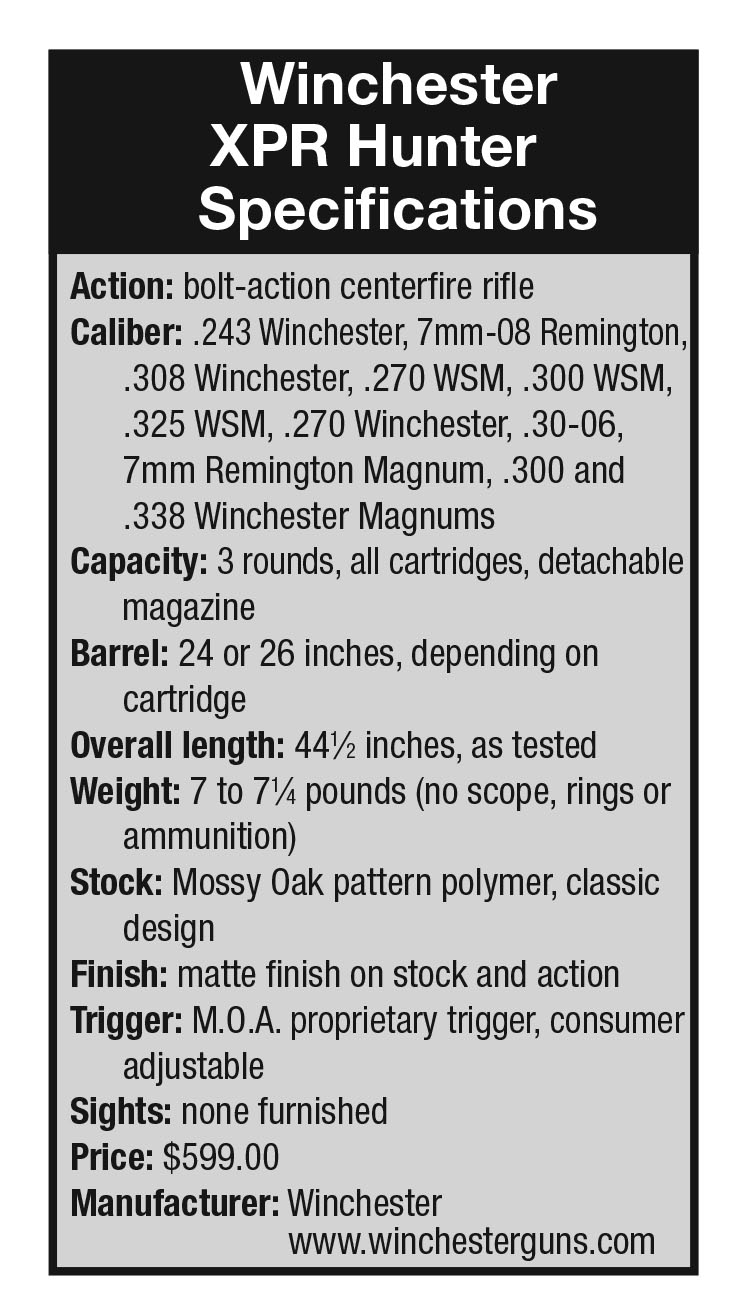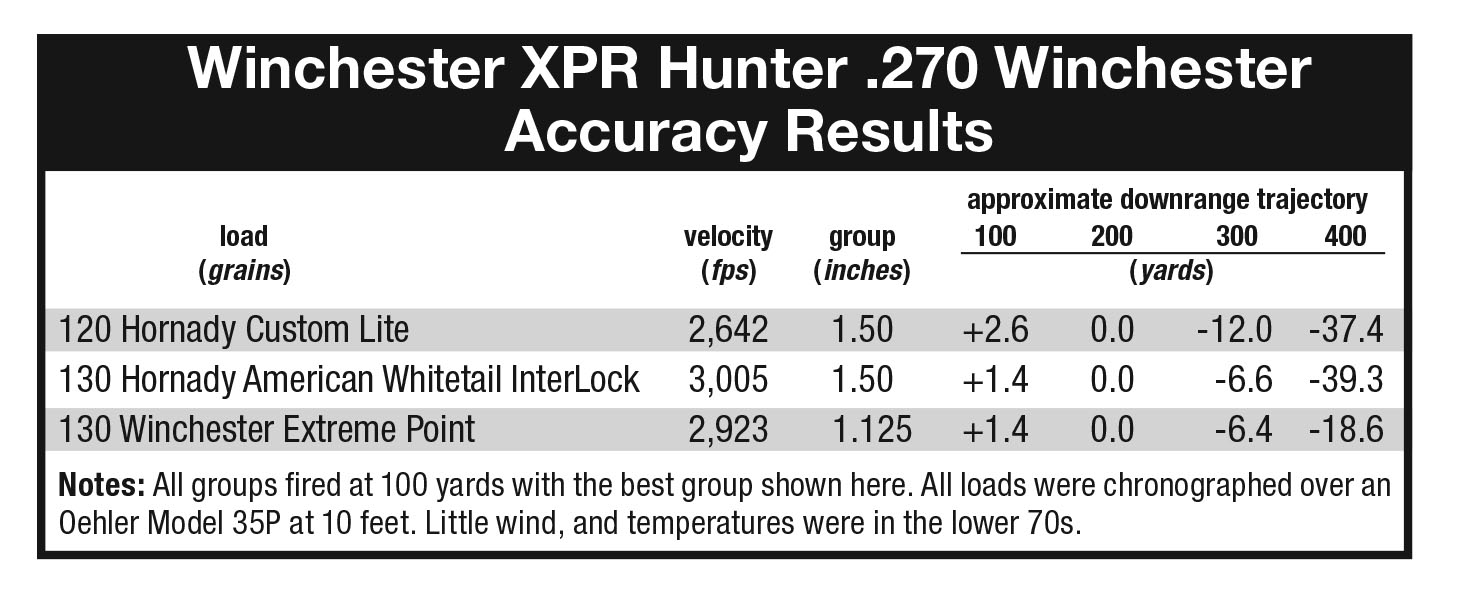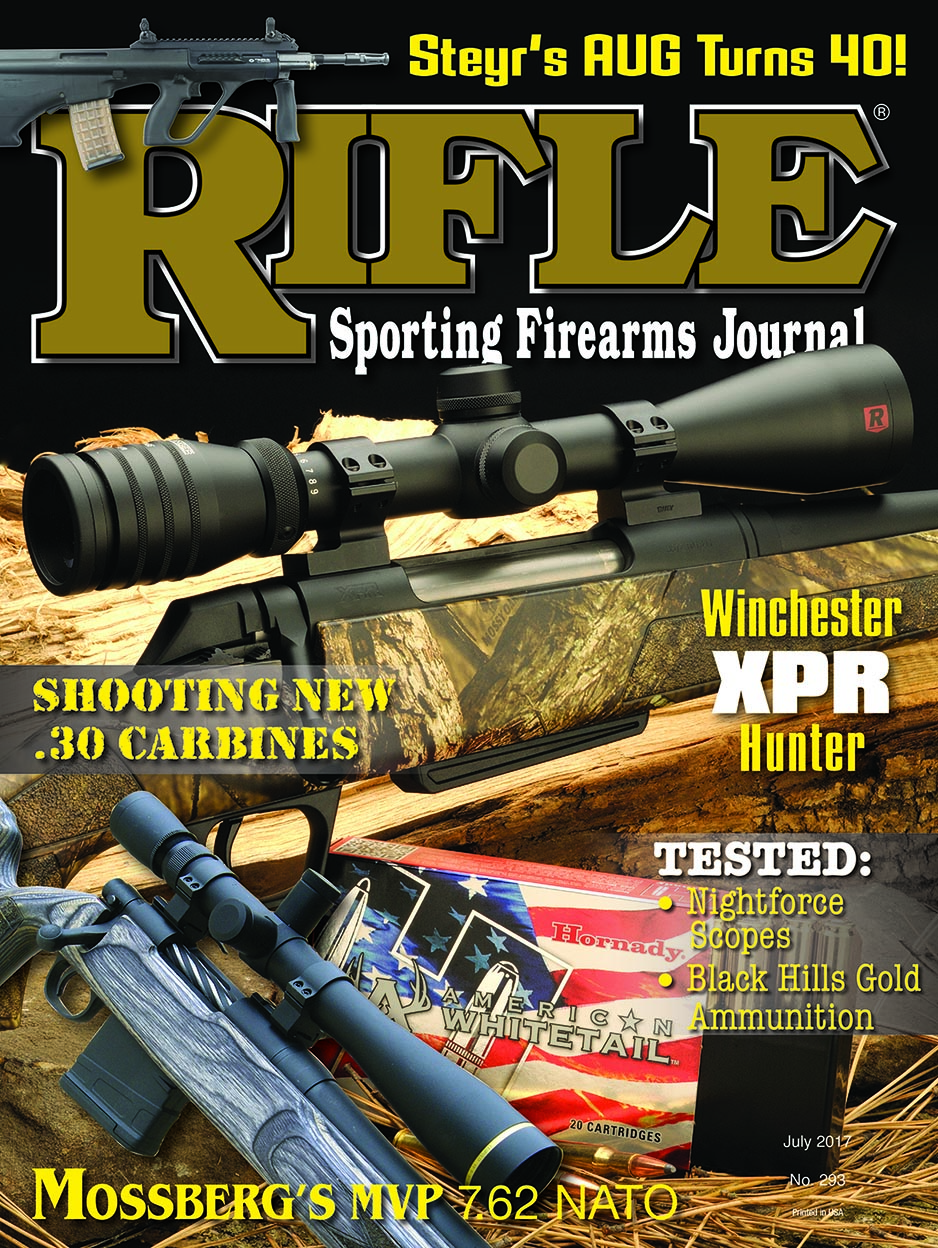Winchester XPR Hunter
Test Firing a .270 Winchester
feature By: Stan Trzoniec | July, 17
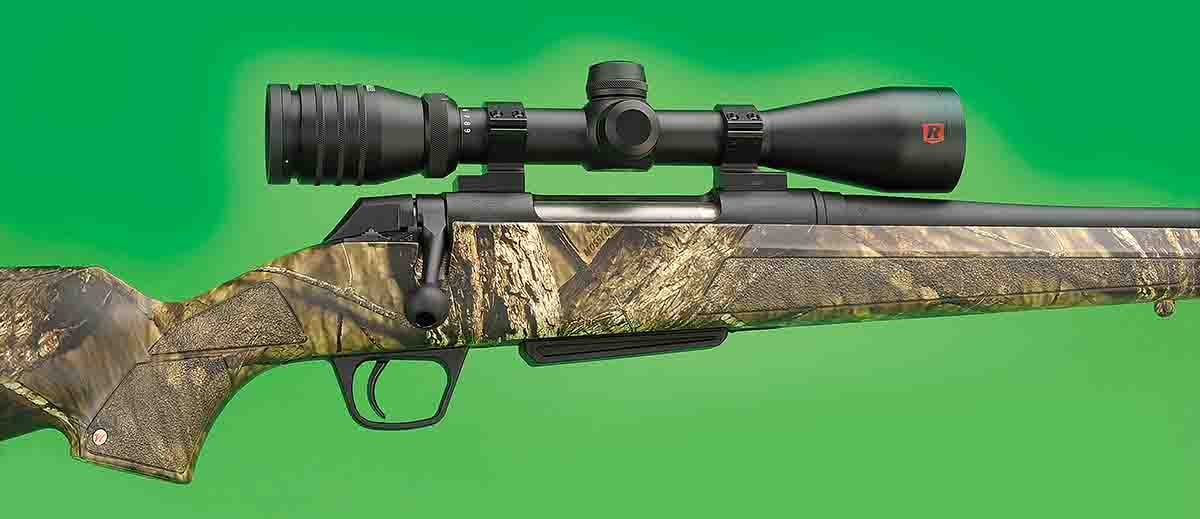
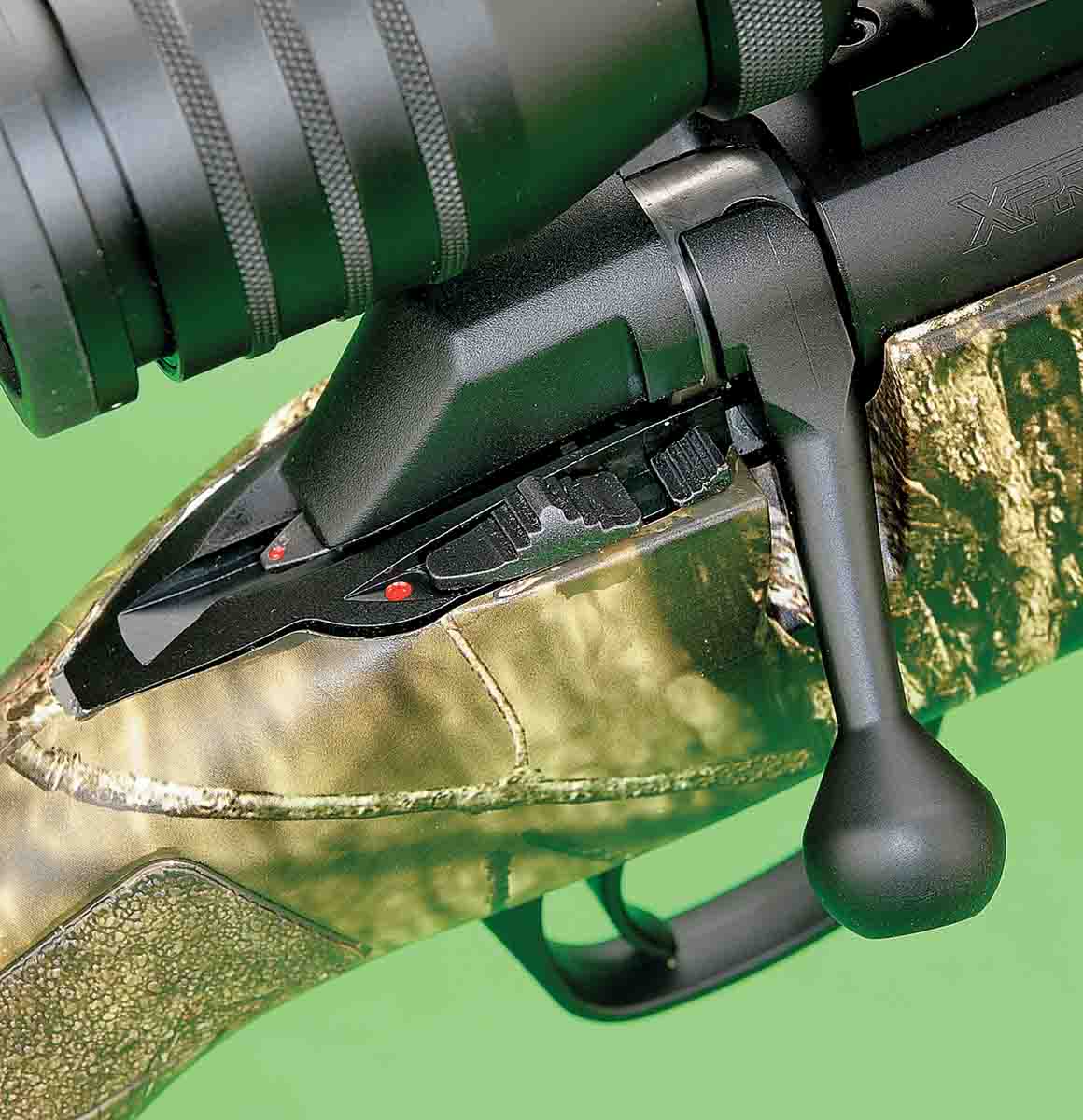
Winchester recently introduced its XPR Hunter with a Mossy Oak stock. This rifle is certainly geared to the all-weather hunter. Keep in mind this is not a Model 70, but it has the Winchester feel all over. In short, this is part of an emerging group of rifles seen from all manufacturers that combines modern CNC technology with a reasonable price tag and great features.
The Winchester Model XPR, after being introduced with a plain, nondescript black synthetic stock, is now being offered in almost a dozen cartridges from the .243 Winchester to the .338 Winchester Magnum. While the jury still might be out regarding a wood-stocked version, it might be considered in the future for more traditionally minded hunters.
The rifle is made in Portugal for BACO by Browning Viana. The lines of the new rifle are crisp; the quality is good in both execution of design and manufacturing. In profile, the appearance of the XPR will appeal to both new and veteran hunters, especially with the classic look of the stock. It is rugged and stylish.
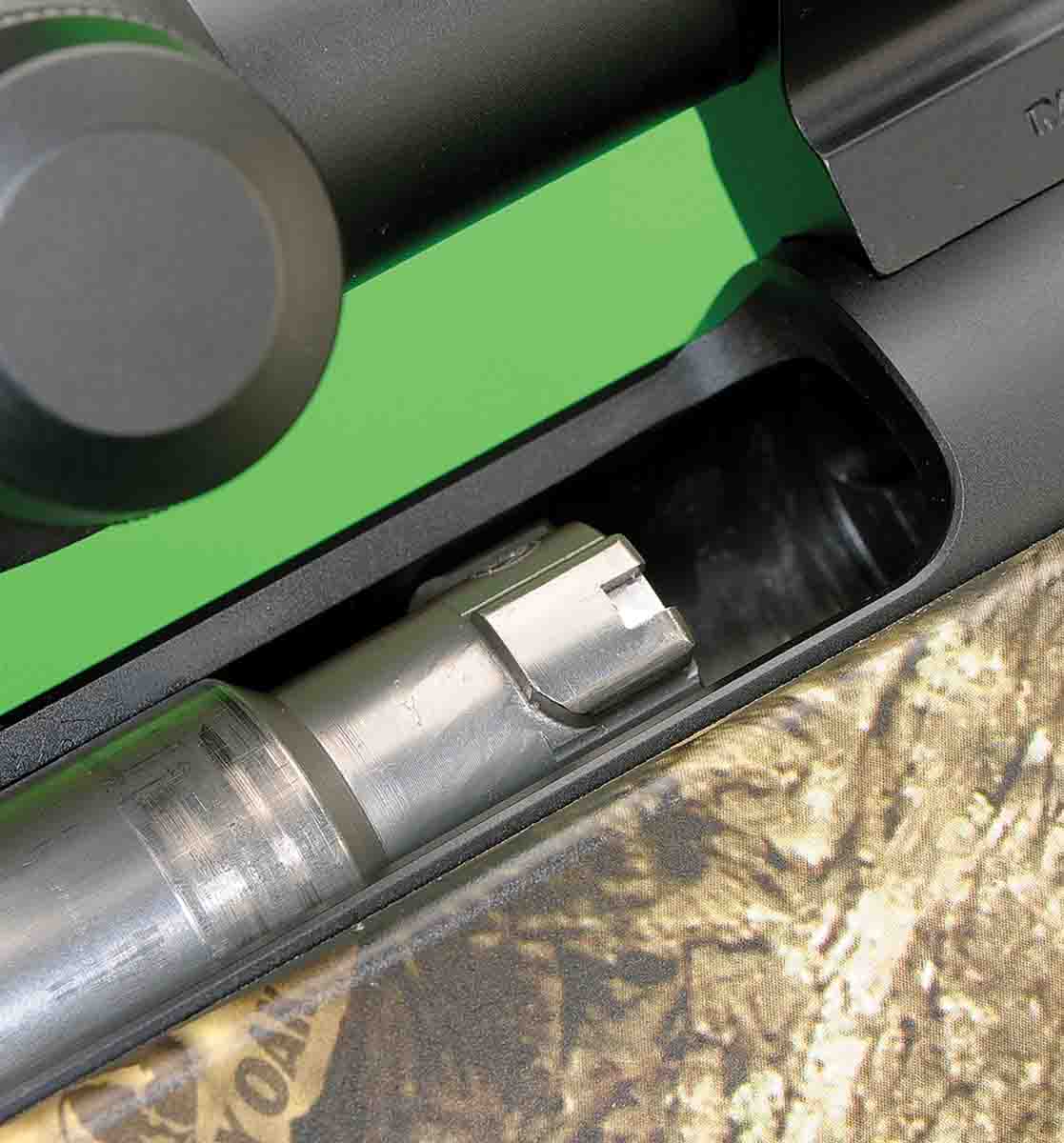
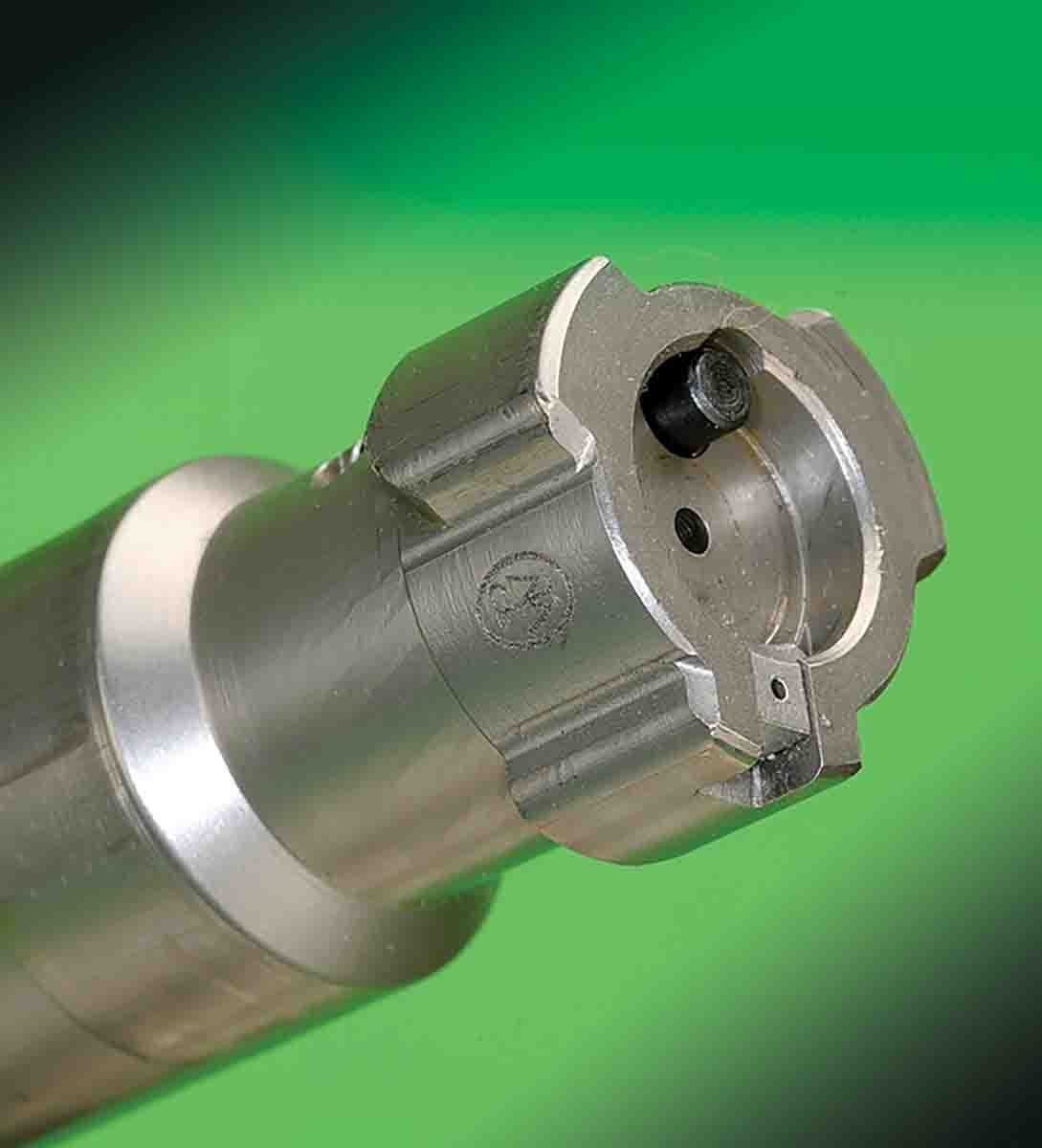
For field use, the feel of the rifle is agreeable. Starting at the muzzle end, there is no forend tip, with the stock ending up with a reverse taper for appearance. The bottom of the forend is flat, making the rifle easy to rest in any steady position in the field or while shooting from the bench. There are finger grooves on both sides of the forend that taper back and end at the barrel/receiver juncture. Typical of synthetic stocks, the stippling is impressed and coarse enough to allow a good purchase no matter the weather or gloved hands.
Winchester’s attention to the rest of the stock is appreciated. I am of average stature when it comes to size and weight, and the rifle’s designers followed these guidelines. The stock slims down around the action then opens up with a well-proportioned pistol grip serving both right- and left-hand shooters. There is a bit of a palm swell on both sides, followed by a two-paneled stippling pattern to grip the stock securely while firing. The sweep of the pistol grip is comfortable and finishes out with a mock pistol grip cap with the W logo molded in. When it comes to the buttstock, there seems to be a slight hint of a cheekpiece molded in on both sides, there is no line-disturbing hump on the comb, and when the rifle is shouldered, my eye went right to the center of the reticle on the Redfield scope. Length of pull is 133⁄4 inches. The XPR is furnished with the Winchester Inflex Technology recoil pad, which is designed to divert the forces of recoil down and away from the face.
Molding a synthetic stock perfectly around the action is not a big thing these days, so the inletting is spot-on. Because of the round receiver, engineers had to design and execute a plan for solid contact between the receiver, bedding and stock. Since the XPR has a cylindrical receiver with no recoil lug, Winchester devised a way by which a crosswise slot cut into the receiver mates with a steel insert in the stock just forward of the front stock screw. This works perfectly as the receiver is joined to the barrel with a lock nut – something Savage pioneered more than 60 years ago to keep costs down when setting headspace in the production cycle.
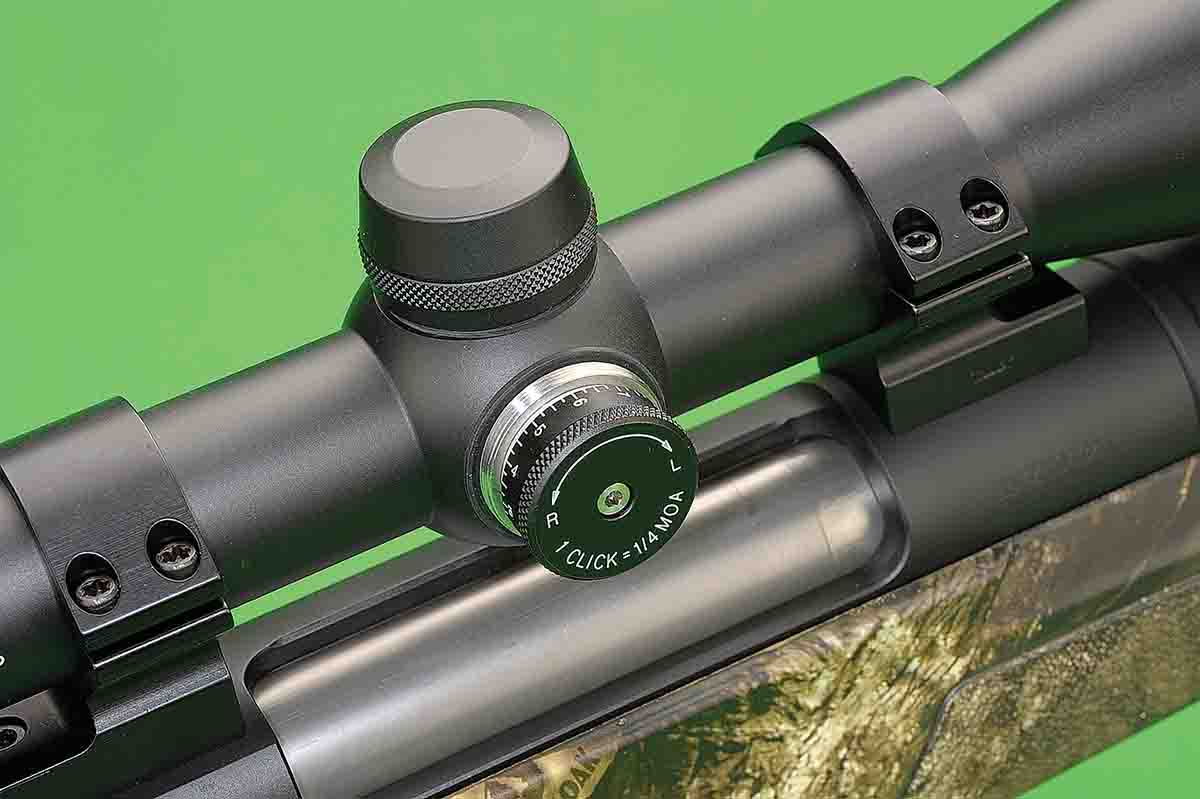
The action itself is obviously the result of the partnership between Browning and Winchester. Now part of the FN conglomerate, it is easy to see how this relationship is paying off in reduced prices for the consumer. For example, I have a cylindrical type of bolt in front of me from the Winchester XPR and one from the Browning AB3. Except for minor differences in the bolt handle, shroud and length (one is a short action; the other is a long action), both are identical right down to the major exterior features, including the bolt release and appearance. This would include the triple locking lugs, extractor and ejector in the bolt face; the diameter of each is within a few thousandths of an inch, which I assume is from the differences in the finishes. Aside from that, both fit into the receiver of either rifle but will not lock up because of the length of each.
Bolt throw is a curt 60 degrees, which makes the action a little harder to open over a twin-lug system, but it takes no time to get used to. The bolt body is finished with an electroless nickel Teflon coating for smooth operation with the side benefit of added corrosion resistance. The bolt handle has a slight rearward rake to it and is relieved of some material on the knob end for weight savings. At the rear, the bolt shroud has a modern design, and underneath, when the bolt is cocked, a red cocking indicator pops out as a visual sign the rifle is loaded. The bolt fits neatly into a machined raceway in the receiver, and since it does not make contact with the magazine follower, it is easy to cycle.
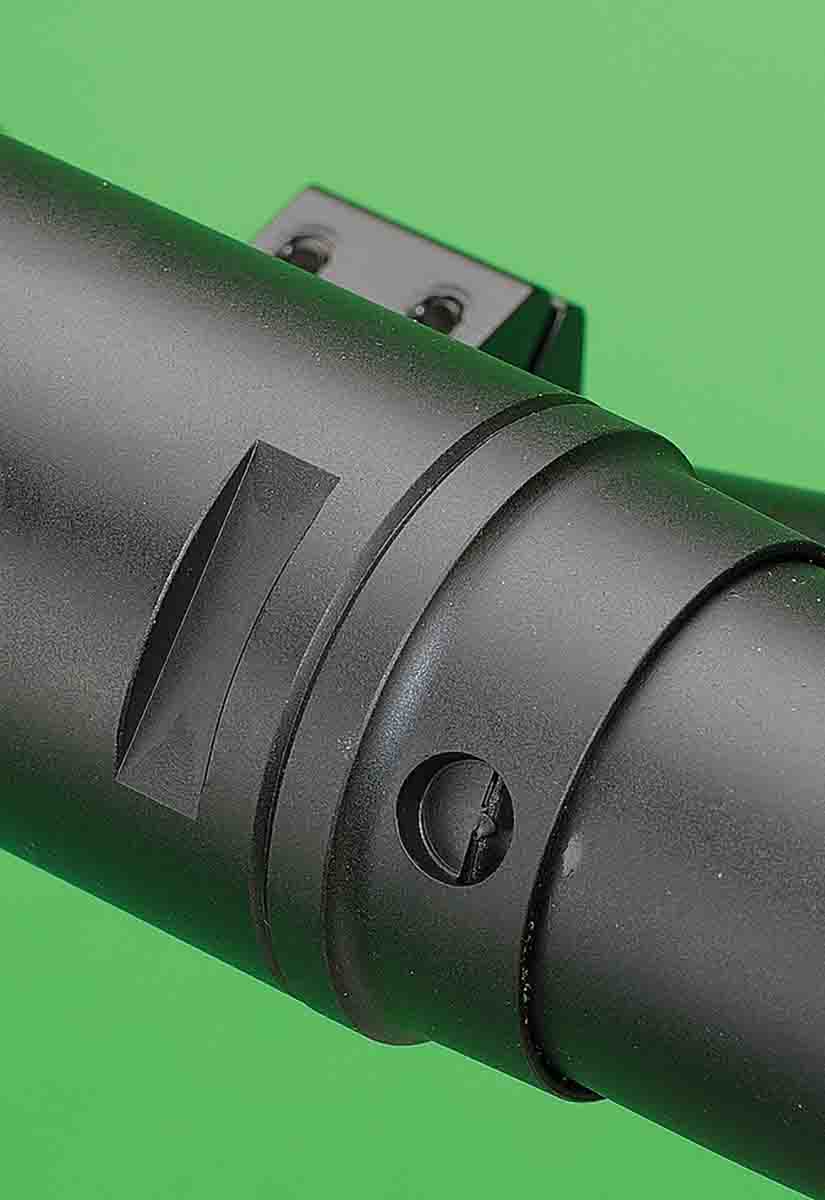
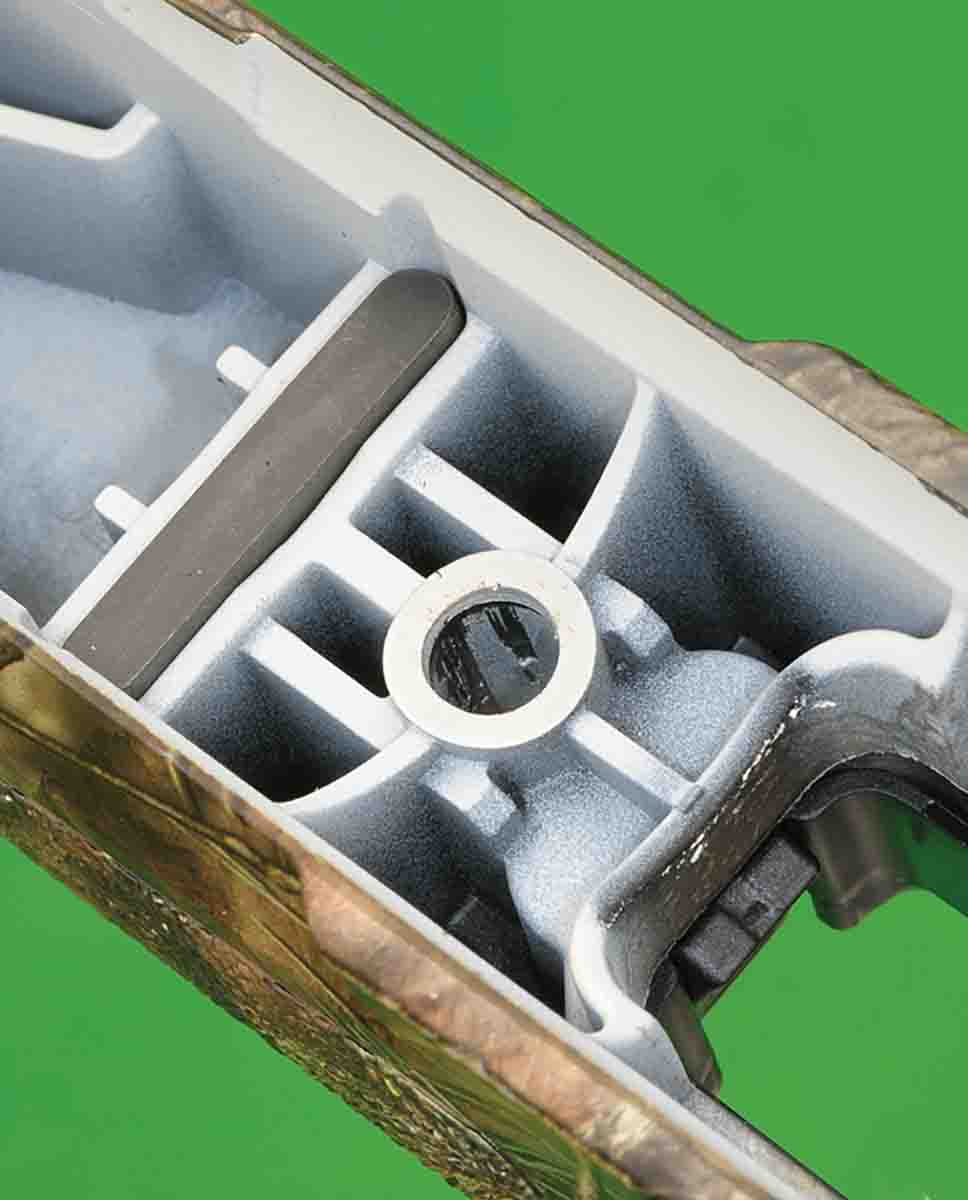
The receiver, like the rest of the metal, is satin finished for low glare in the field with the supplied Winchester integral ring/base combination matching the rifle perfectly. New in this series is the addition of more robust 8-40 receiver screws for durability – a departure from the more common 6-48 screws. The receiver is machined from a blank of chromoly steel bar stock, heat-treated and finished in a tough blue finish. The ejection port is designed for the cartridge to be used. There was no hint of problems cycling or ejecting spent cartridges.
Again, comparing both rifles, the Winchester XPR has the same bolt release button that allows opening the bolt and/or removing or adding a cartridge with the safety on. Located in front of the two-position safety, pushing it down allows the bolt to be opened without disturbing the safety, but only when the rifle is locked down with the thumb safety on. The free-floated barrel on the .270 Winchester sample is listed as being 24 inches long complete with a recessed target crown, but other models, including the 7mm Remington Magnum and .300 and .338 Winchester Magnums have 26-inch barrels. The trigger guard, bottom “metal” and a three-round detachable magazine are made of polymer, a lightweight material that will take a lot of abuse and still look good over the life of the XPR.
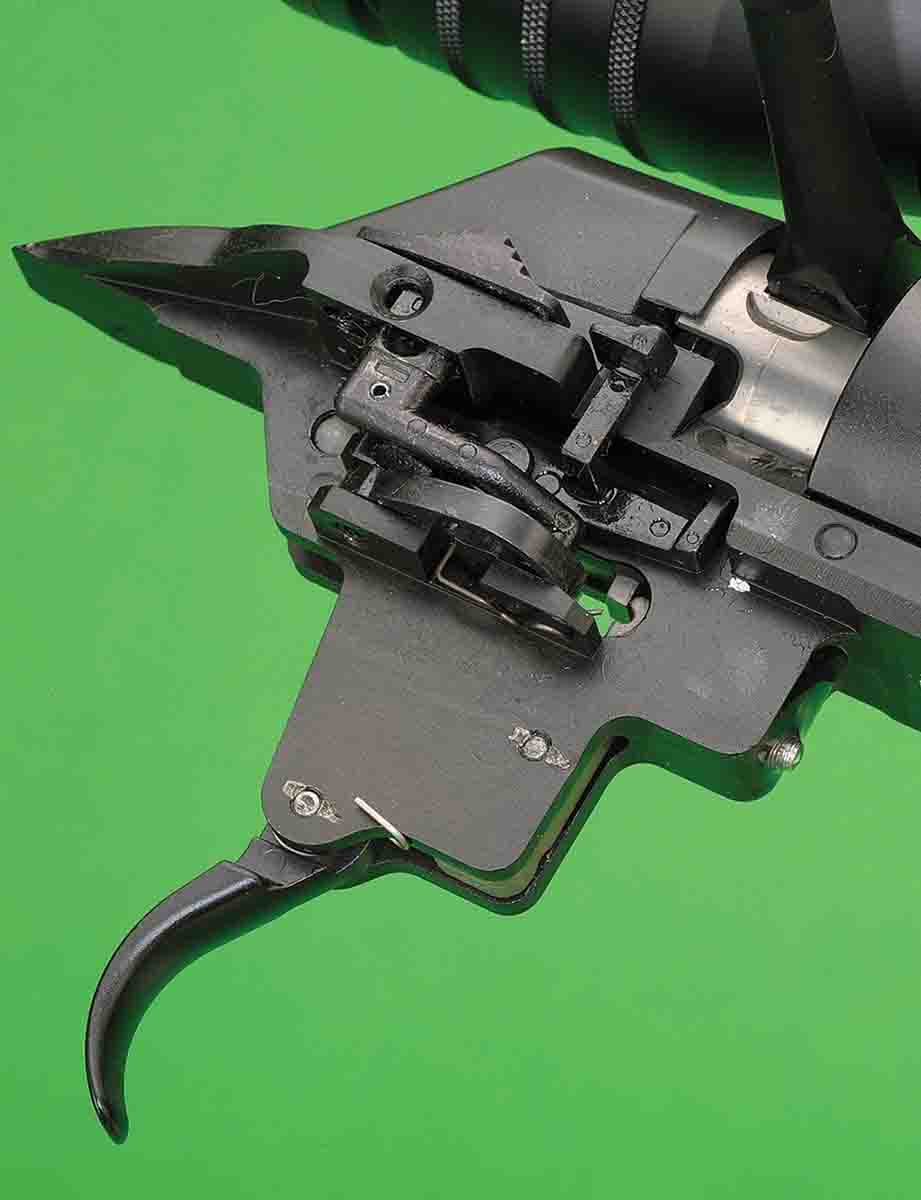
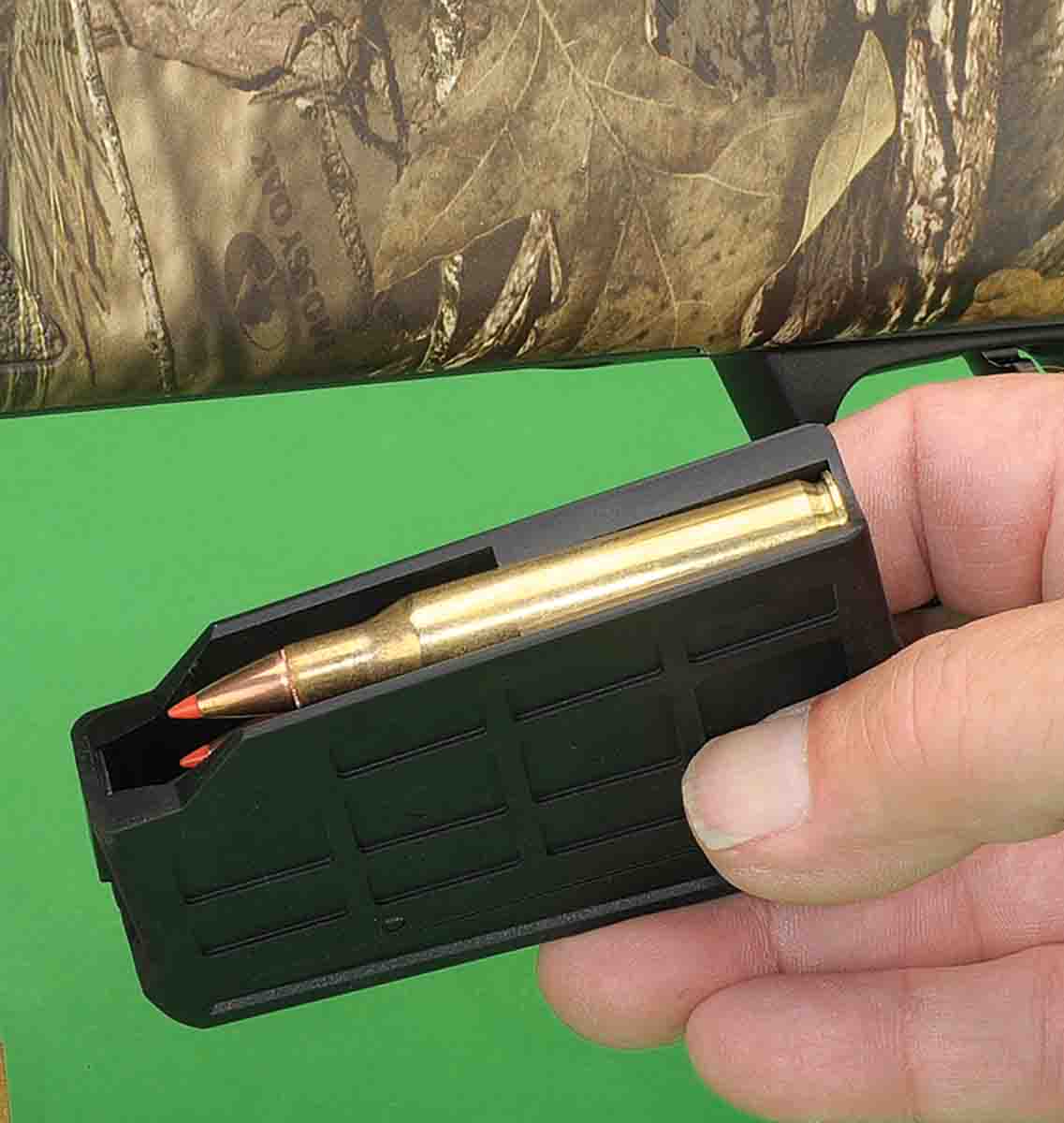
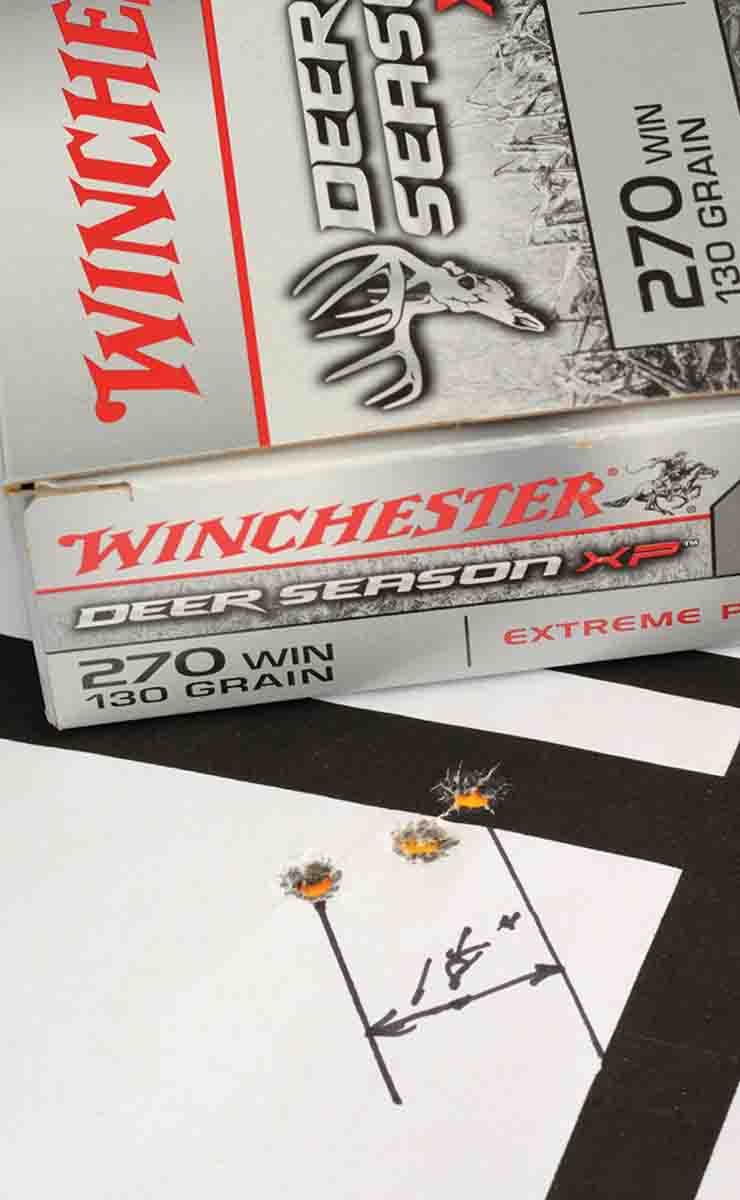
At the range, there were no problems with the new Winchester XPR. Groups from Hornady and Winchester factory loads averaged between one and two inches with the best groups shown in the related table. The rifle was a pleasure to shoot, and aside from the slightly heavy trigger, it performed as expected. The magazine was easy to load, with empties ejected far to the right. The stock was comfortable to shoot on the bench and when shooting clay pigeons offhand at 100 yards.
